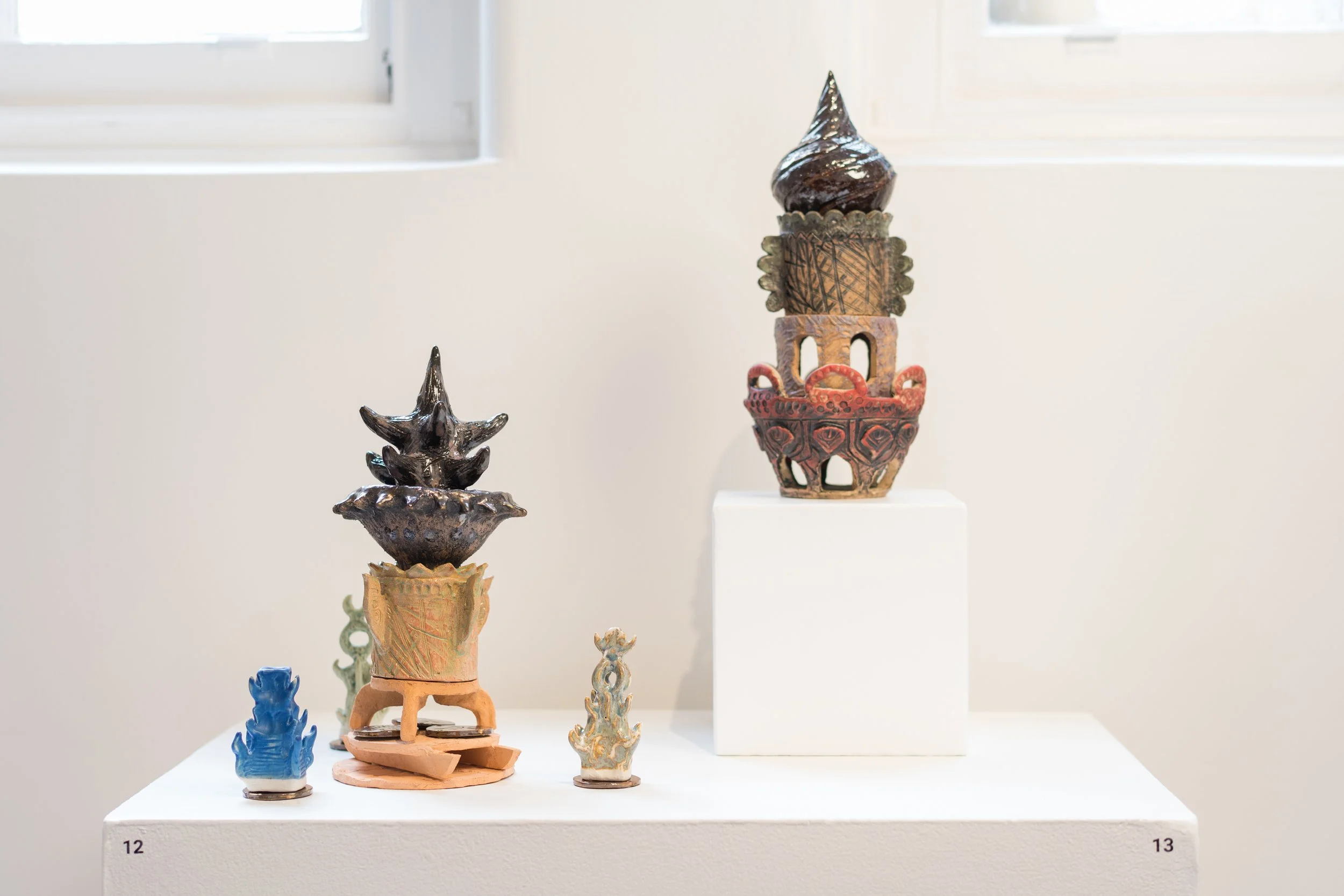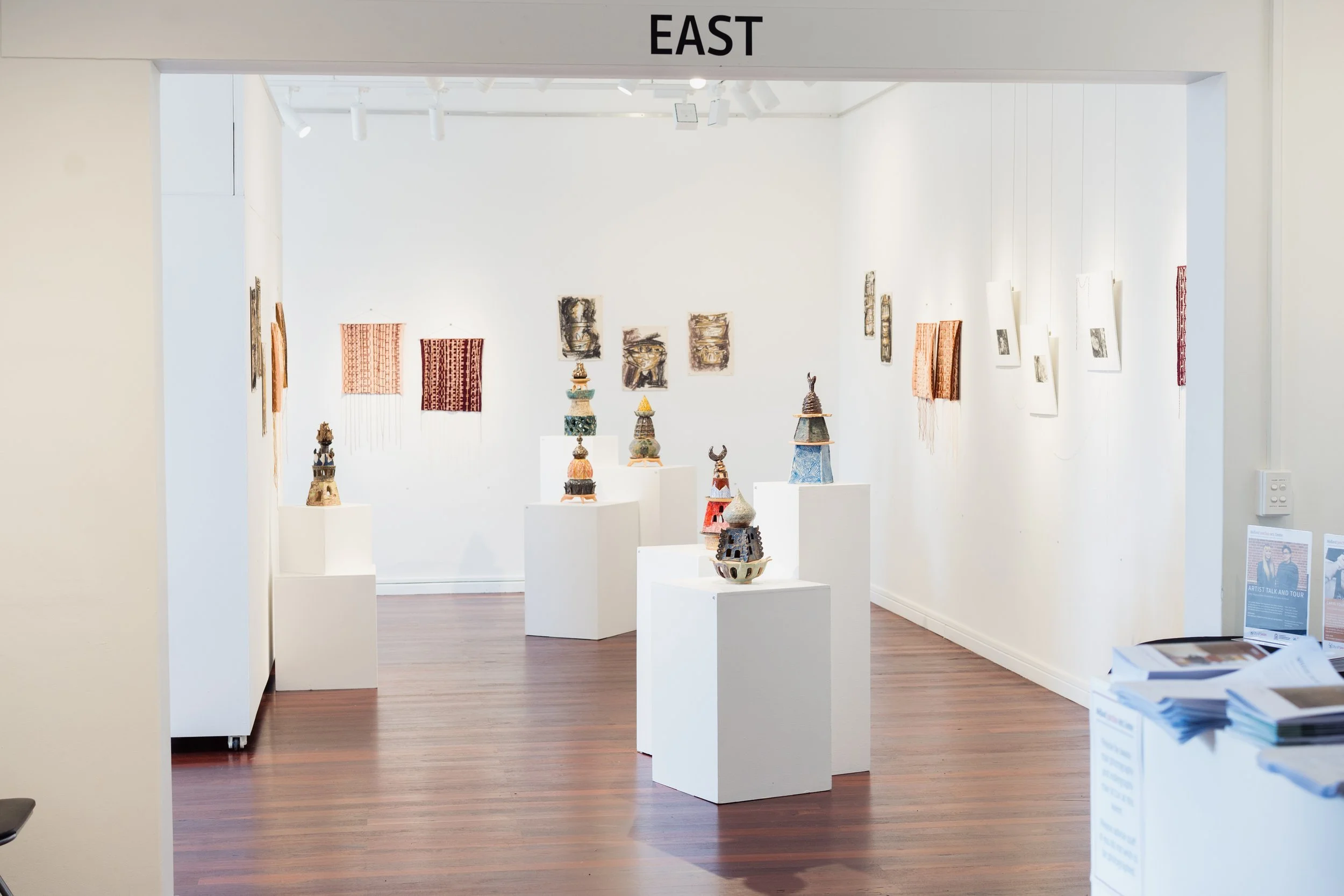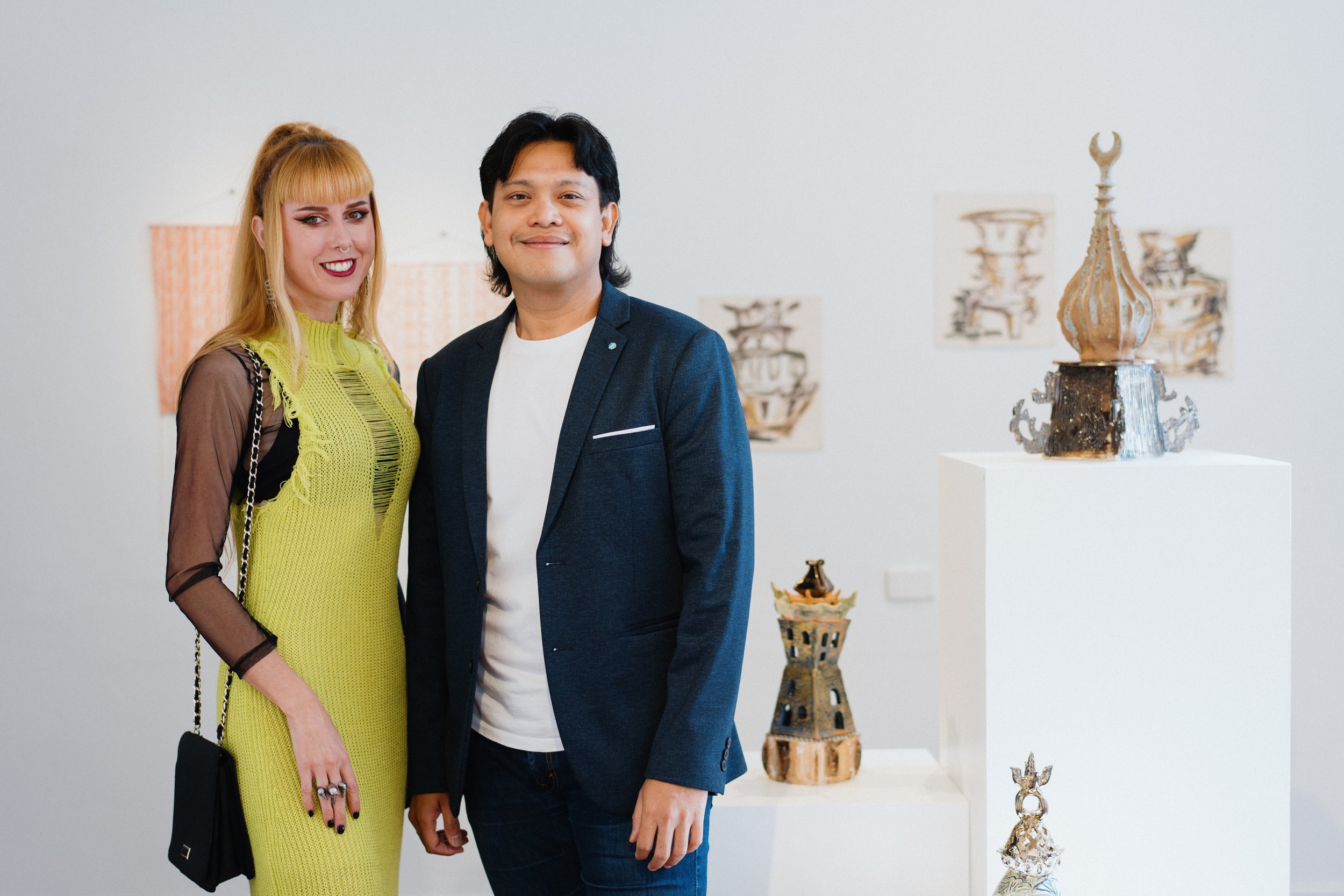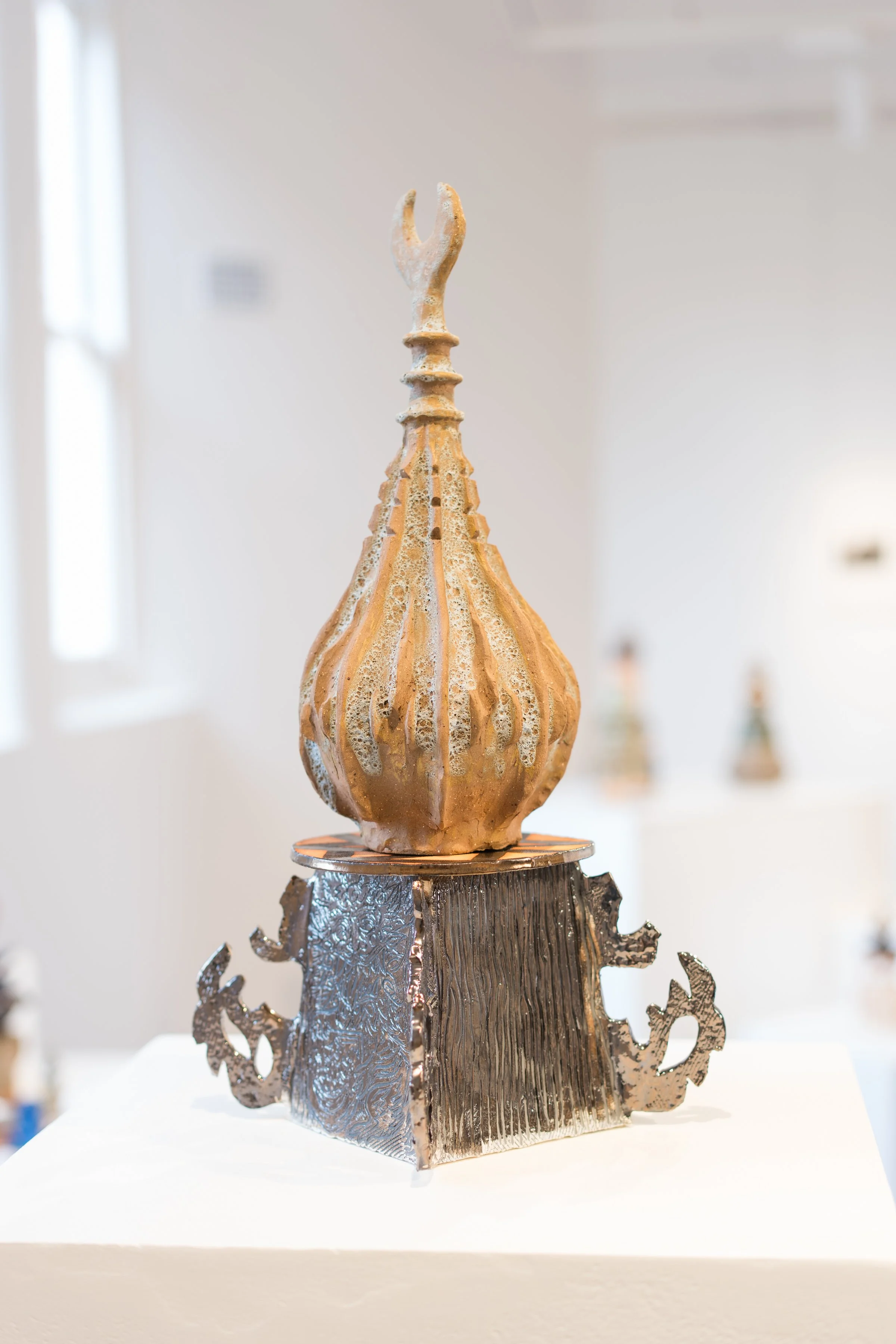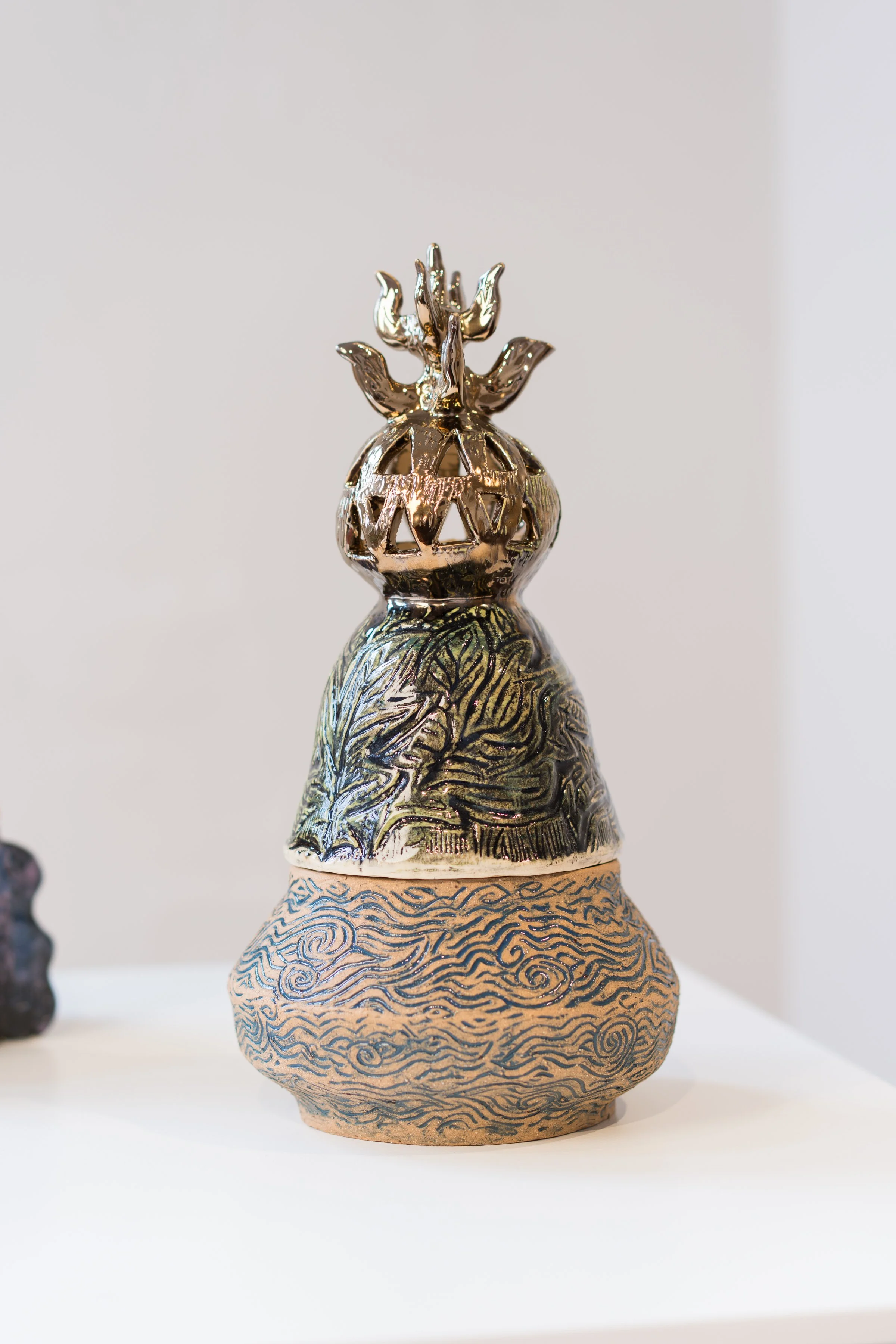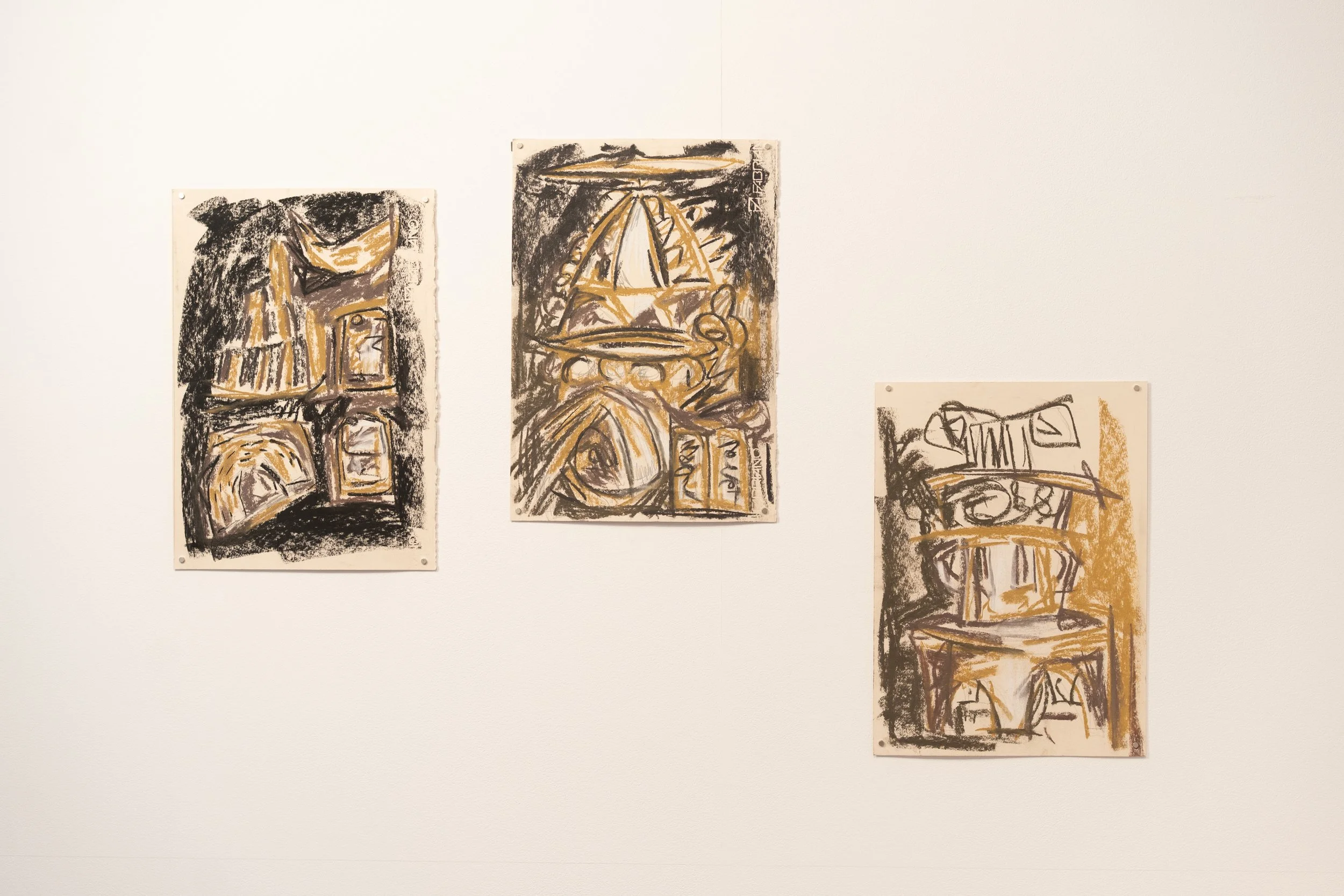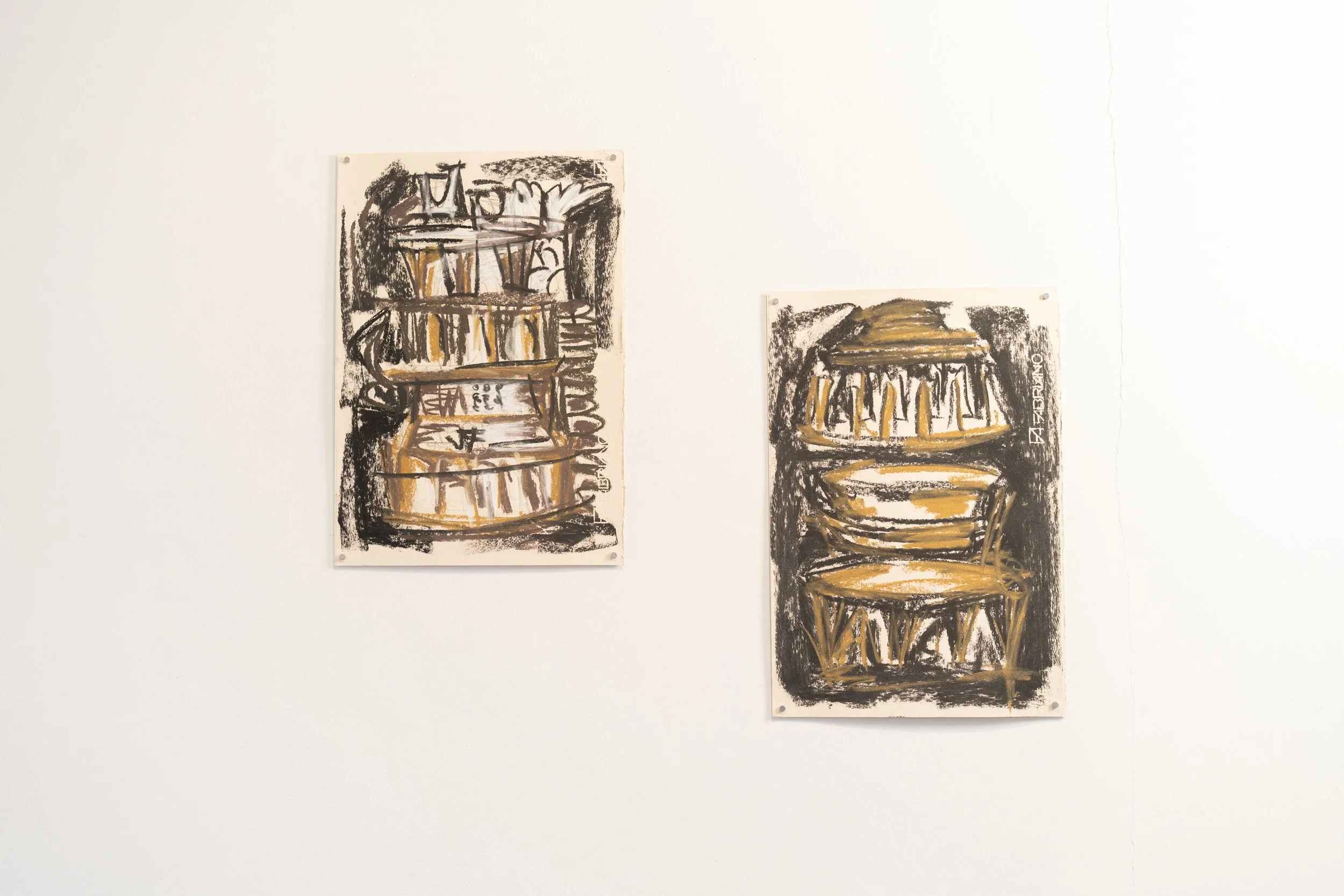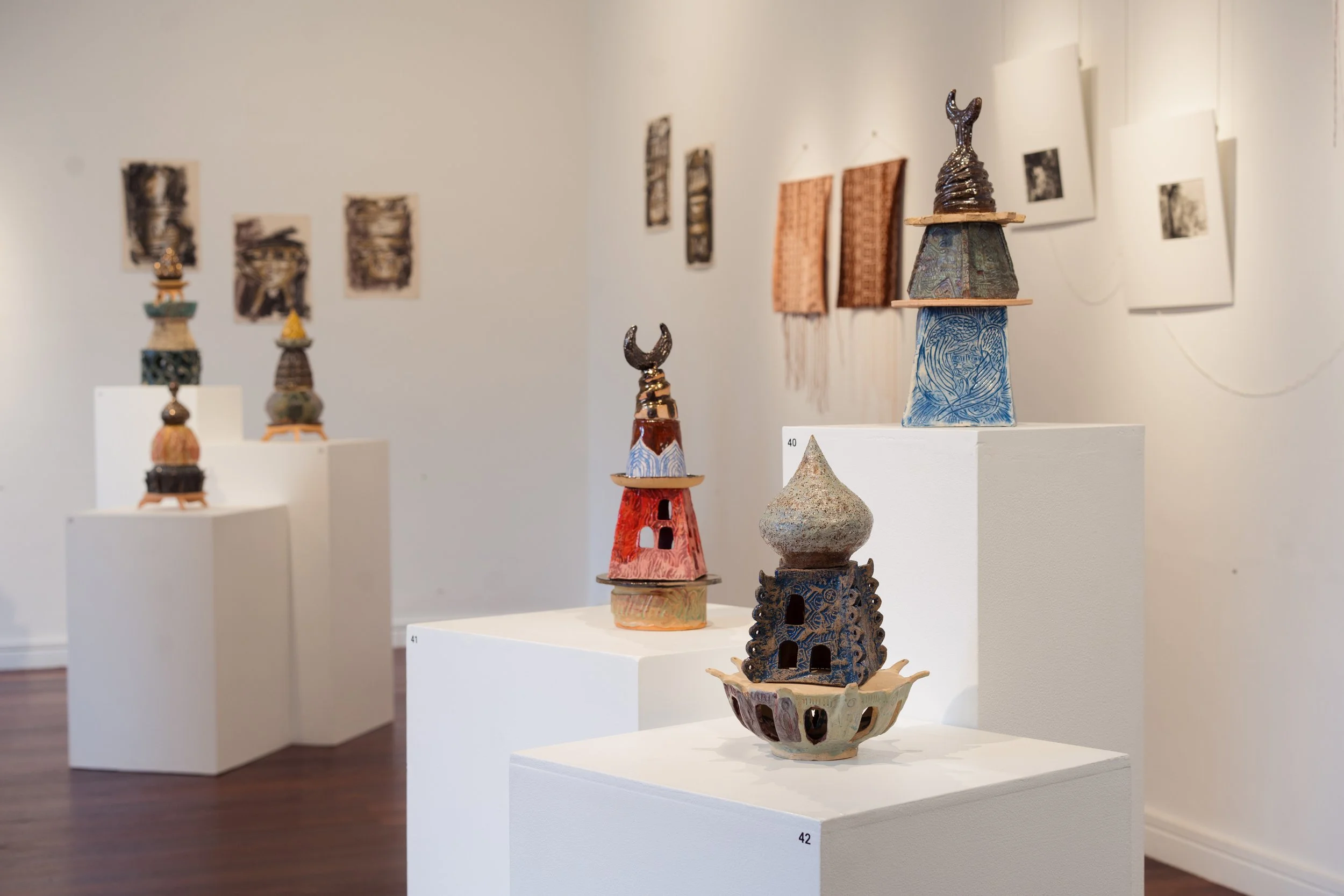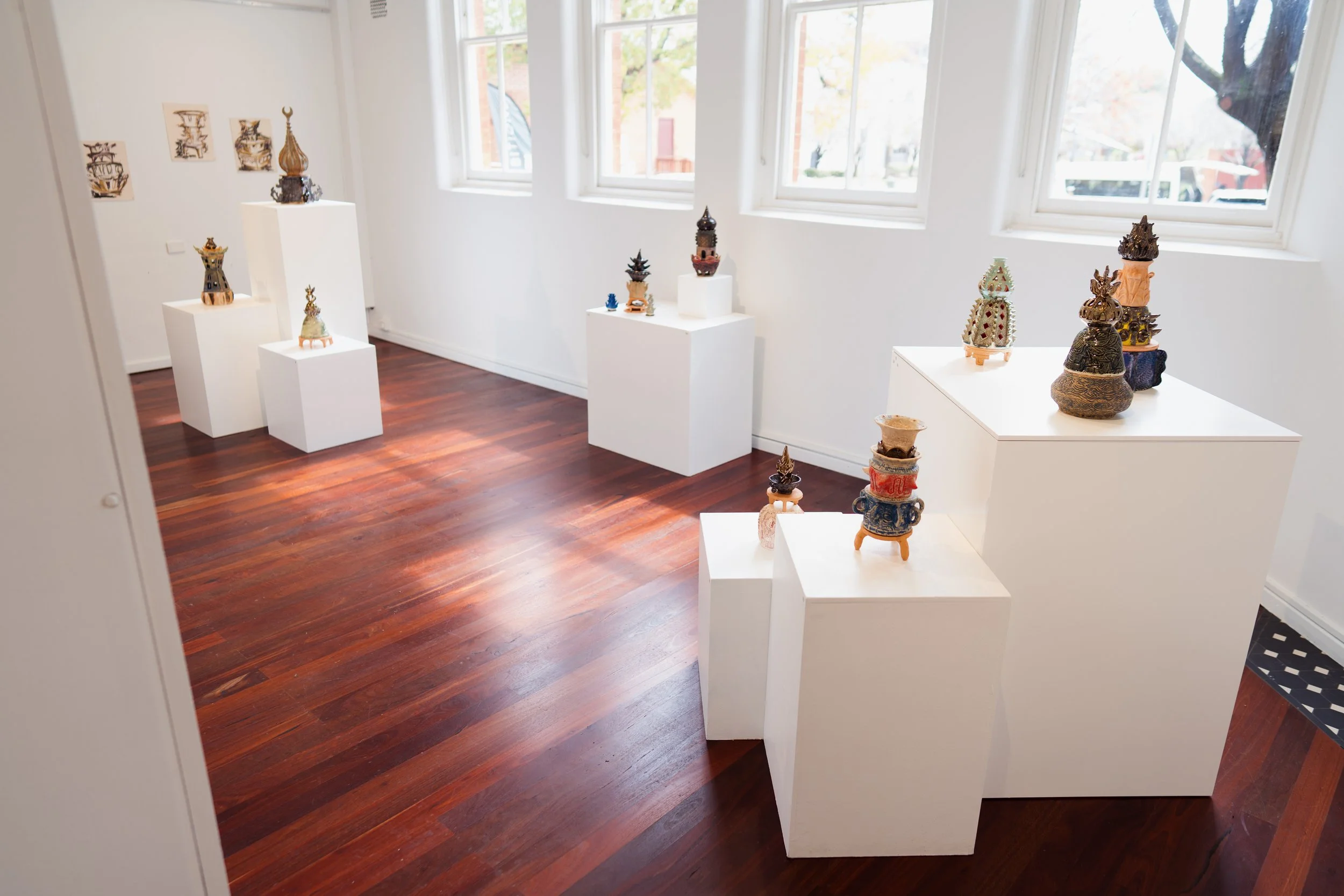Where Do We Truly Belong?
East Gallery, Midland Junction Arts Centre, Perth.
6 September - 9 November 2025
Kasia Kolikow & Nazerul Ben-Dzulkefli
Tracing contours of lived realities, Ben-Dzulkefli and Kolikow move beyond a singular notion of place, delving into the complex terrains of being and belonging, where identity is continually negotiated across shifting geographies, social dynamics, and multiple planes of existence.
Inspired by the complexities of his Melayu-Javanese-Acehnese heritage and Singaporean upbringing, Ben-Dzulkefli explores the visual language of gunungan offerings, hantaran and sesaji to create these frankensteinian stacked site markers that function as monuments for finding one’s bearings, offerings to the co-collaborators who have existed in Boorloo and the areas surrounding Swan Valley where he chose to make a home. What aspects of one’s identity are layered with new ones developed along the way? What social mores from his old home-island does he marinate with new ones he encountered here? How do we let our emotions and memories ferment into new lived experiences? If memories and belonging is tactile, what would they feel like on our fingertips, face and lips?
Photos by Josh Wells Photography
Where do we truly belong?
Opening Address by Monique Bosshard Curby
Welcome, everyone, and thank you for joining us for the opening of Where Do We Truly Belong, an exhibition of works by Kasia Kolikow and Nazerul Ben-Dzulkefli.
I first met Kasia and Nazerul while they were studying visual art at North Metropolitan TAFE, and I was their lecturer. Both immediately stood out—curious, hardworking, and determined to develop their own themes and bodies of work early on. Naz became a driving force behind many student-led exhibitions, while Kasia, I still remember your acceptance into the international online show with Megalo Print Studio during Covid—what an achievement!
It’s inspiring to see how connections made in art school—working partnerships, shared struggles, and conversations—grow into friendships, and how those friendships can lead us here today, to this interesting and thoughtful exhibition.
Let me share some reflections on its title: Where Do We Truly Belong?
It is a question, not a statement; not only for the artists, but also for us as viewers. And the inclusion of the word truly sharpens it further.
What makes us feel that we belong?
The dictionary offers definitions: to belong is to be part of a group or place, to fit in, to feel accepted and included. To have an affinity for a special place or situation. In essence, to feel safe, at ease, and connected to something larger.
Belonging also overlaps with identity and with it its many facets that shape it. Yet, identity is never fixed; it shifts and rebuilds itself constantly, invented and imagined, an experience uniquely individual and collective.
Having migrated myself, I feel the weight of this question. Leaving one’s country makes the search for belonging especially vivid. What do we carry with us when we leave our families, our hometowns, our languages? What in-between spaces do we and our descendants inhabit?
In-between-spaces show in Kasia’s layered photographic work- more than one world or reality exists simultaneously. I feel we don’t need to decide what we see: either-or, mostly all at once in its multiplicity.
Interestingly, the word belong comes from Old English belangian—with be meaning involvement, and langian meaning to long for, to reach toward. So, to belong is not just about fitting in; it carries a sense of yearning, of stretching outward—perhaps toward something we’ve lost, or something still to be found.
This duality is reflected in Kasia’s and Naz’s works.
Kasia explores belonging through what is close to home: familiar objects, garments, and language. She uses yarn—soft, intimate, associated with care. In knitting, a single thread becomes stitches, stitches connect to rows, rows become a surface. Each stitch depends on the others and is a precedent for the ones to come, a bit of gene-a-logy there. Yet, the emerging fabric can unravel in an instant. Her works carry this tension—between fragility and resilience, between the deeply personal and the shared.
Naz works with clay—earth itself, the ground on which we stand. Clay begins soft and formless, then gradually holds shape through touch, processes of drying, and firing. His vessels, often stacked, contain stories. What we feel is that the stories are fragmented, speak of time simultaneously past and present, the faraway nearby. And I wonder, what stories, figures and words each of us would inscribe on our vessels?
Together, Kasia and Naz don’t offer us definitive answers. Instead, they invite us to enter into dialogue with the question: Where do we truly belong?
What is certain, though, is that through their art-making—and through the friendship they forged—they have created a space of belonging for themselves, and now for us to share.
So, as you walk through the exhibition, I encourage you to have conversations: with the works, with Kasia and Naz, and with each other about truly belonging.
Congratulations, Kasia and Nazerul, on your exhibition.
Enjoy the show—and thank you.




